Last-Minute NYC Holiday Gift Guide 🎁
We’ve created a holiday gift guide with presents for the intrepid New Yorker that should arrive just in time—

Gas street lamps are a rare sight in New York City! Discover the story behind these 13 posts in Brooklyn Heights.

The flickering flames of gas lampposts enhance the historic charm of Poplar Street in Brooklyn Heights. 19th and early 20th-century brick buildings line the street which sits within the bounds of New York City’s first designated historic district. You might think these old-fashioned light fixtures are as historic as the homes they stand in front of, but they are a fairly new addition to the street. Only a handful of original gas lampposts exist in New York City’s five boroughs. The lamps that line Poplar Street were installed more than a century after the first gas lamps appeared.
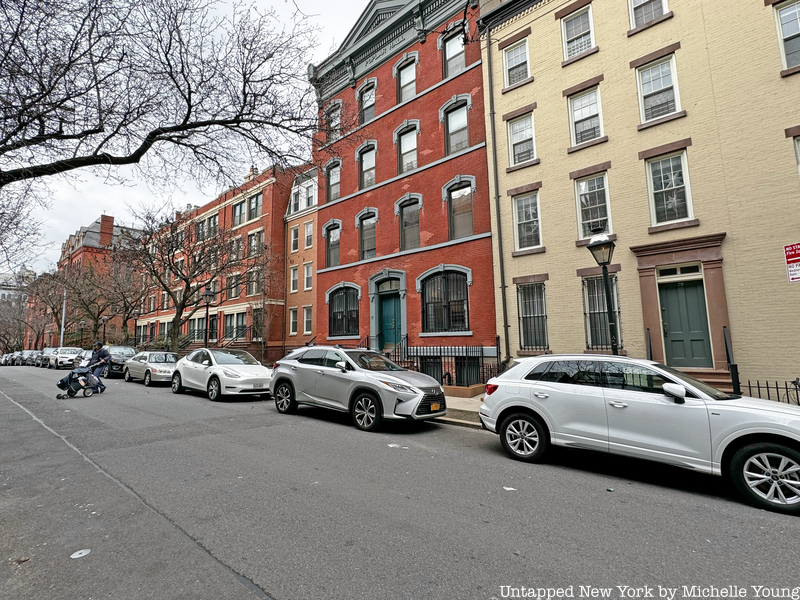
Public street lighting in New York City started back in the colonial days of New Amsterdam. According to William T. O’Dea’s The Social History of Lighting, the Common Council of New York ordered “all and every of the housekeepers within this city” to “put out lights in their windows fronting ye respective streets” in November 1697.
The Landmarks Preservation Commission explains in its designation of the city’s historic lampposts that the next iteration of street lighting came in 1762 when the first municipal street lights paid for by taxes went up. These were simple wood posts topped with lanterns. Watchmen assigned to the posts would ensure there was enough oil and that they were lit.
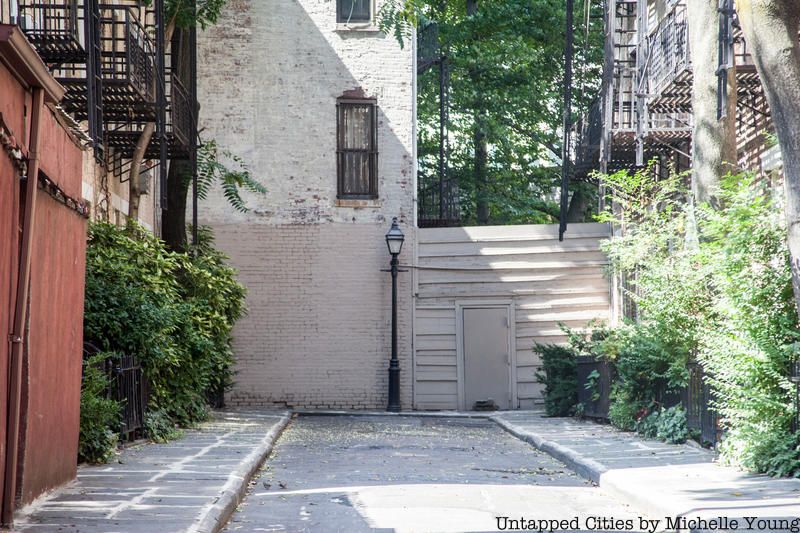
Gas lighting was introduced to the city in the 1820s. The City tasked the New York Gas Light Company with setting up the necessary infrastructure and providing supplies for gas-powered street lighting on Broadway from Grand Street to the Bowery. Once that route was lined with cast-iron lamps and gas pipes, the company went on to illuminate all streets between the East and Hudson Rivers south of Grand and Canal Streets. Electric street lamps first appeared on Broadway in 1880.
Only two lamps from the 19th century gas days survived into modern times. The two historic posts that remain today can be found on Patchin Place in Greenwich Village and at the northeast corner of 211th Street and Broadway in Inwood (though that one is missing its lantern).
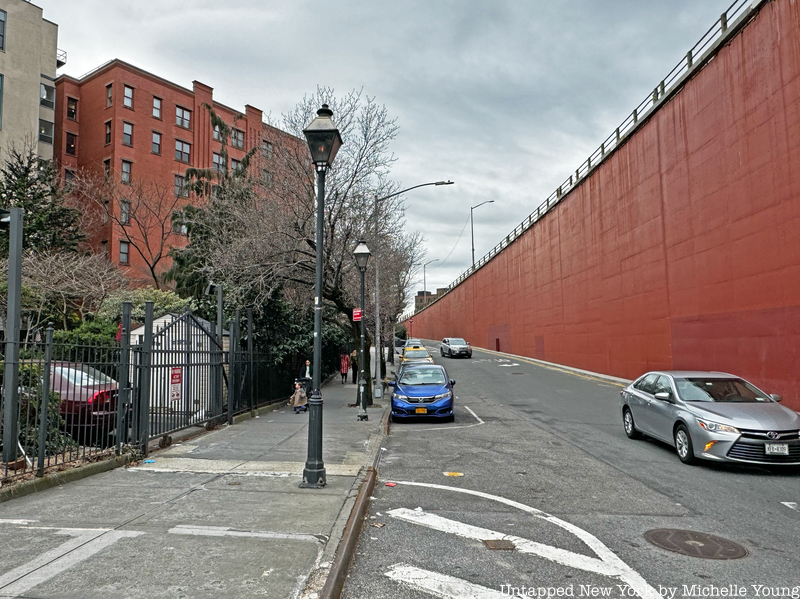
The gas lampposts in Brooklyn Heights are an homage to the early gas lampposts like the one at Patchin Place. They share a similar design with a simple shaft topped by an eight-paned lantern. A small eagle perches on the top with its wings outstretched. This was the standard design in the 1860s, however, the contemporary lampposts are missing the horizontal bar just below the lantern that served as a ladder rest.
You can see 13 of the newer posts along the north side of Poplar Street, up the east side of Hicks Street, and along the exit ramp from the BQE down Old Fulton until Henry Street. They were installed during a 1980s development project.
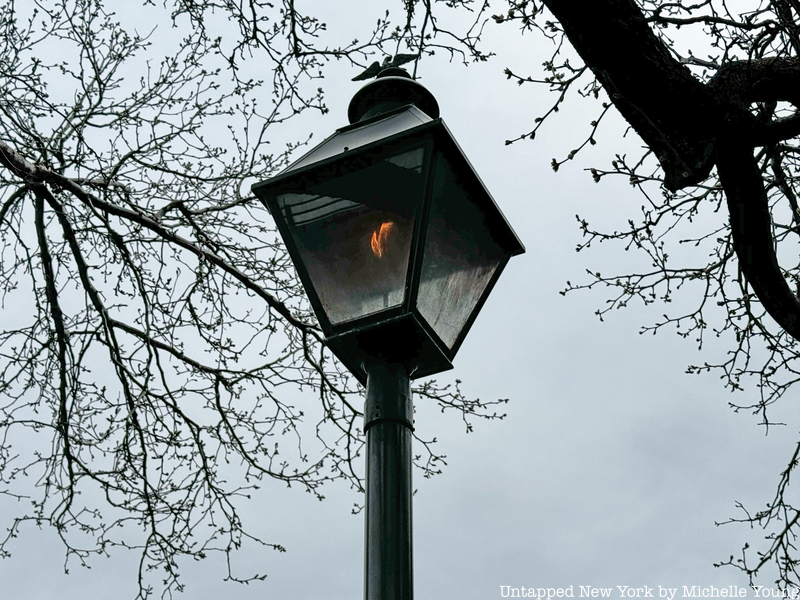
A large portion of Poplar Street was lost when the Brookyn-Queens Expressway (BQE) was built, but luckily a few historic structures on the street were saved. In the 1960s, the block of Brooklyn Heights bounded by Poplar, Hicks, and Henry Streets—Block 207—was one of the last parts of the Cadman Plaza Urban Renewal area to be developed. Robert Moses started the controversial Cadman Plaza Urban renewal project in the 1930s. Local residents and preservation groups were heavily involved with the development of Block 207 and many plans for this historic stretch of property were put forth. In 1979 the city approved a plan from a group of local architects under the title Poplar Street Associates.
The main goal of this plan was to restore “the charm and grace of older buildings.” The gas lampposts helped create that effect. An orphanage built by the Children’s Aid Society in 1883 was one of the older buildings saved. Chris Platt designed a new construction apartment complex among the remaining historic structures. The project was nearly complete by 1986.
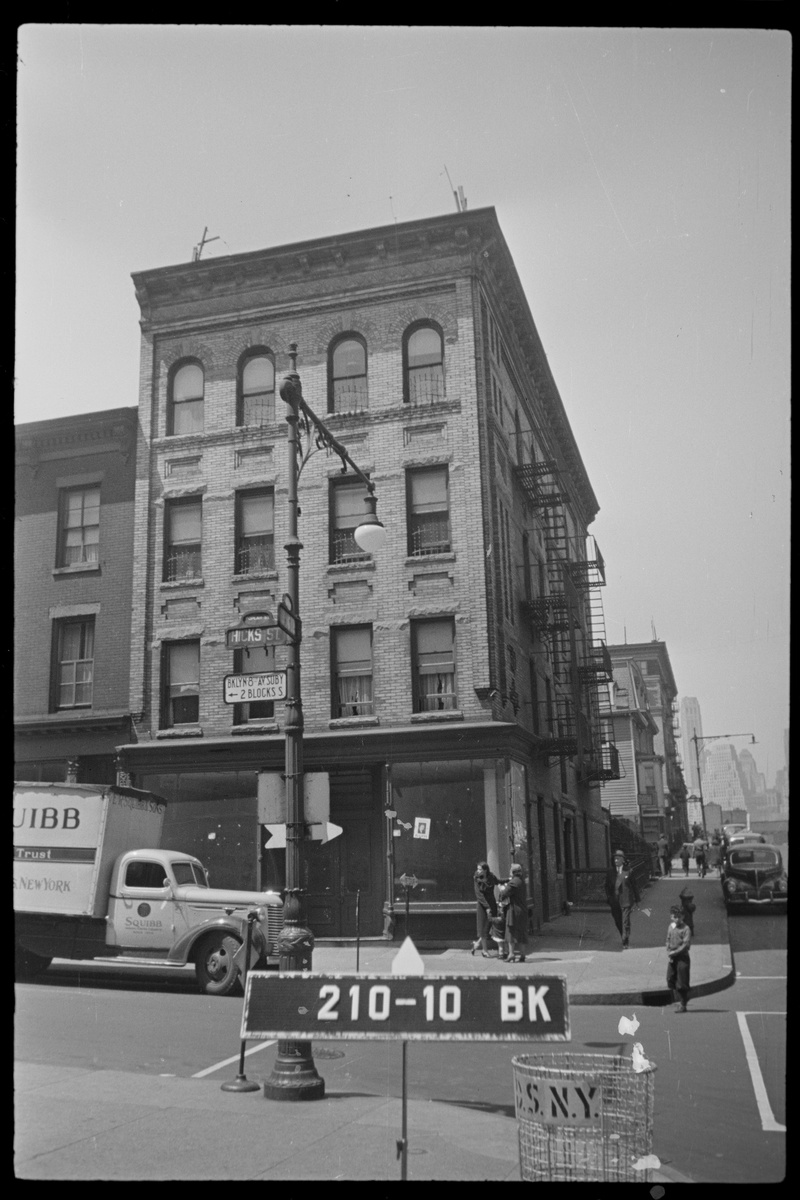
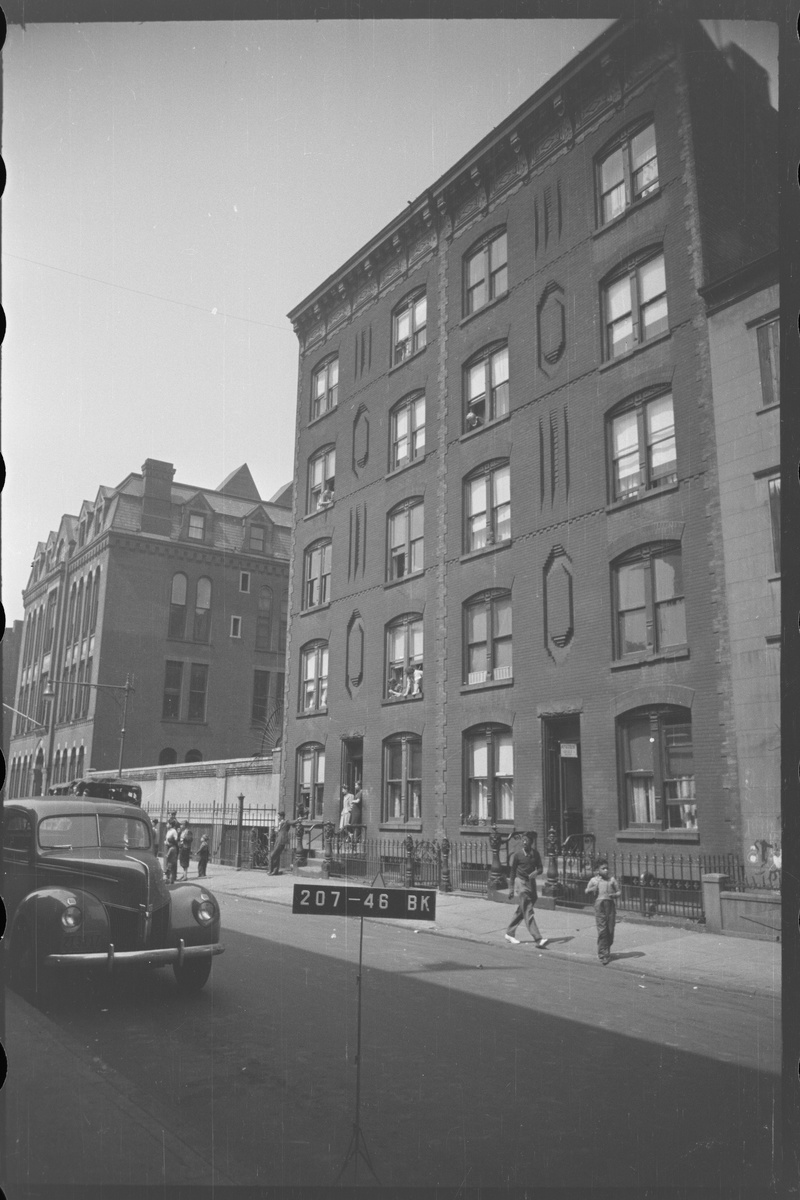
You can see from 1940s tax photos that ornate electric lights in the Mast-Arm style once lined the street. That style was introduced in 1908 and re-introduced in the late 19th century as the Type M post. Standard octagonal poles later replaced the Type M posts and still stand amongst the gas lamps in Brooklyn Heights today. New construction replaced the building shown in the image above at 69 Poplar Street. The corner building pictured on Hicks Street still stands.
The NYC DOT maintains over 315,000 streetlights. Energy-efficient LEDs have replaced nearly all of the bulbs. This sustainable change turned the city’s yellowish lights to a brighter and crisper white. Some argue this change has caused the night to lose its romance. At least on Poplar Street, you can still enjoy the cozy flickering of a gas-powered street lamp.
Next, learn more about Thomas Edison’s Role in Lighting Up NYC
Subscribe to our newsletter